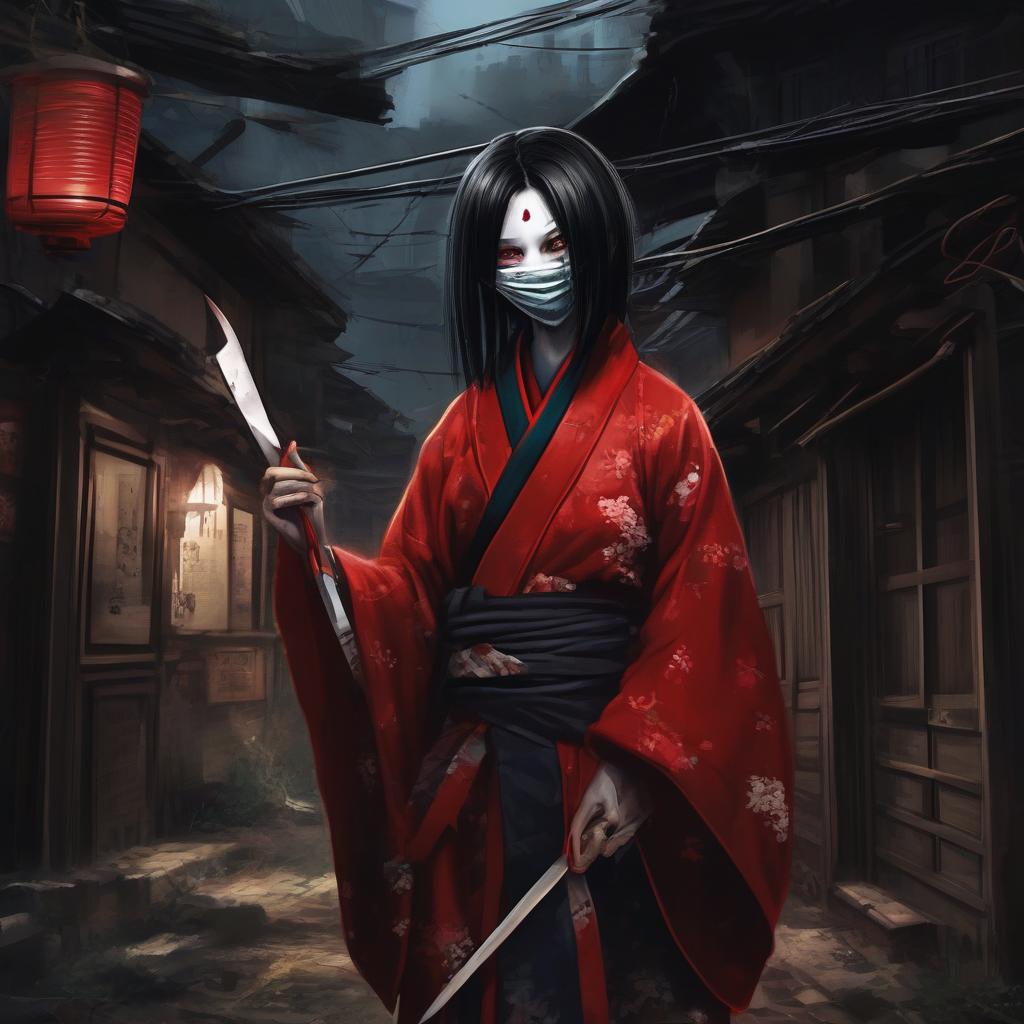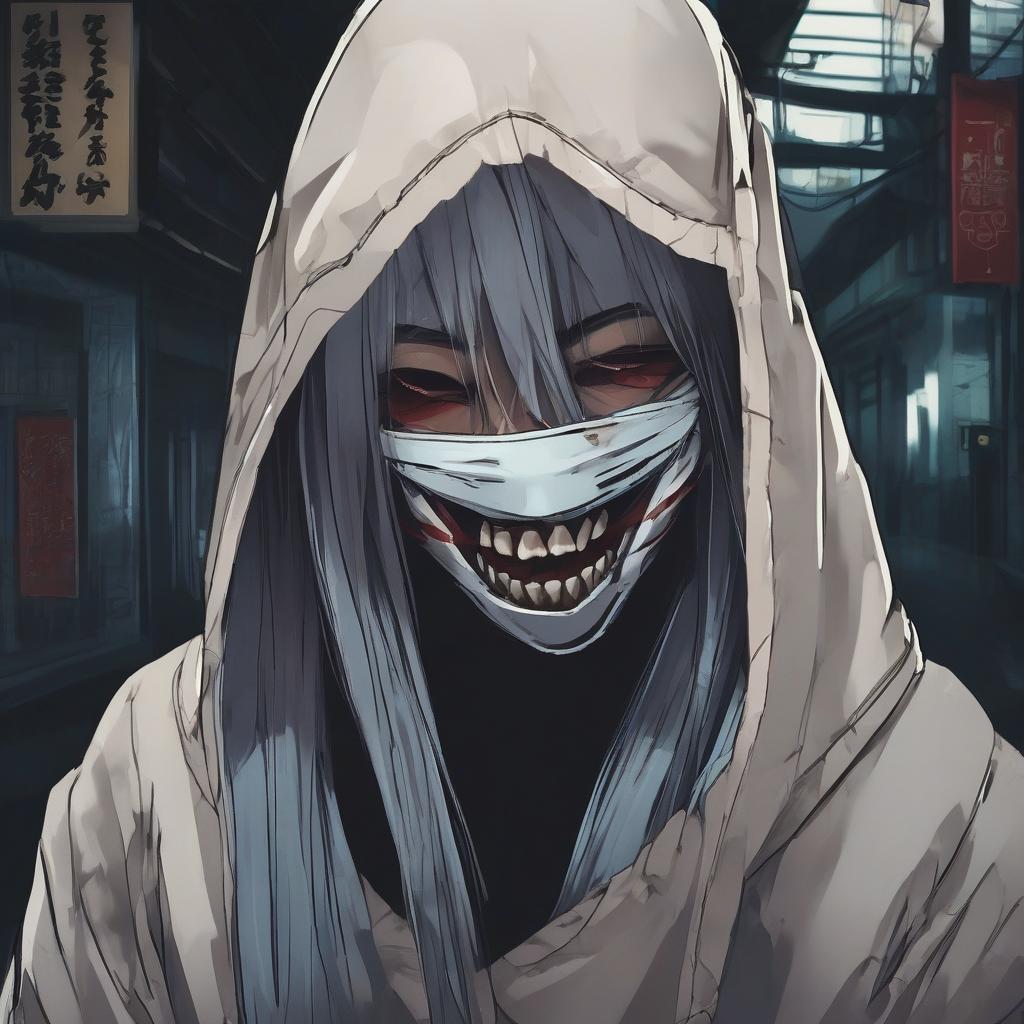
Japan, a land rich in folklore and urban legends, is home to the terrifying tale of Kuchisake-onna, the Slit-Mouthed Woman. This chilling figure, with her disfigured face and deadly question, has haunted the imaginations of generations of Japanese citizens.
In this comprehensive exploration, we delve deeper into the five key aspects of this haunting legend, revealing its origins, cultural significance, and the fears it reflects.
The Mask of Horror
Kuchisake-onna’s defining feature is her gruesomely disfigured mouth, a gash that extends from ear to ear, often concealed behind a surgical mask or scarf. This grotesque visage is a source of both fascination and terror, a physical manifestation of the legend’s disturbing nature.
The origins of her disfigurement vary across different versions of the tale. In some, she is a vengeful spirit of a woman mutilated by a jealous husband or a botched medical procedure. In others, her appearance is a result of a demonic curse or a tragic accident.
A Deadly Encounter
The legend typically unfolds with Kuchisake-onna approaching unsuspecting victims, often children or young adults, and posing the chilling question, “Am I beautiful?” The victim’s response determines their fate.
A negative answer results in immediate and brutal death, usually by the same weapon that caused Kuchisake-onna’s disfigurement. The same question follows a positive response before revealing her horrifying face.
Another negative response seals the victim’s doom, while a positive one might result in a relentless pursuit by Kuchisake-onna, ultimately leading to a gruesome demise.
Roots in Japanese History and Culture
While the exact origins of the Kuchisake-onna legend are shrouded in mystery, it is believed to have emerged during the Edo period (1603-1867). Early depictions often portrayed her as a demon or a vengeful spirit seeking retribution for her disfigurement.
However, as the legend evolved, it began to incorporate elements of societal anxieties and fears, such as the dangers of vanity, the fear of strangers, and the rapid social changes of the time.
Modern Manifestations and Urban Legends
Due to numerous reported sightings and a growing sense of urban unease, the Kuchisake-onna legend saw a surge in popularity during the 1970s.
The legend spread like wildfire, particularly among school children, prompting heightened security measures and reinforcing parental warnings about the dangers of venturing out alone at night.
The widespread panic and fascination with the legend even led to its depiction in various media, including movies, manga, and anime, further solidifying its place in Japanese pop culture.
Escape, Evasion, or Acceptance?
Faced with the horrifying prospect of encountering Kuchisake-onna, folklore offers several potential escape routes. These include confusing her with ambiguous answers, distracting her with offerings, or attempting to outrun her in a zigzag pattern.
However, these strategies are largely anecdotal and offer no guarantee of survival. The legend’s enduring power lies not only in the fear it evokes but also in the sense of helplessness it instills in those who contemplate the possibility of encountering this malevolent figure.

The Slit-Mouthed Woman has transcended the realm of urban legend to become a cultural icon in Japan. Her image is instantly recognizable, and her story continues to resonate with people of all ages. The legend’s enduring appeal can be attributed to several factors:
- The Fear of the Unknown: Kuchisake-onna embodies the fear of the stranger, the hidden threat that lurks beneath the surface of normalcy. Her masked face and seemingly innocent question create a sense of unease and anticipation, tapping into our primal instincts for self-preservation.
- The Dangers of Vanity: The legend serves as a cautionary tale about the perils of excessive vanity and the pursuit of unrealistic beauty standards. Kuchisake-onna’s disfigurement is a stark reminder of the potential consequences of prioritizing superficial appearances over inner beauty and self-acceptance.
- Social Commentary: The legend also reflects broader societal concerns about violence, safety, and the rapid pace of social change. Kuchisake-onna’s presence in urban environments serves as a metaphor for the lurking dangers and anxieties that can arise in a rapidly modernizing society.
Delving Deeper into the Legend
The legend of Kuchisake-onna is a complex and multifaceted one, with numerous variations and interpretations. To gain a deeper understanding of this cultural phenomenon, one can explore the numerous resources available online and in academic literature. A few notable examples include:
- Kuchisake-onna – Wikipedia: https://en.wikipedia.org/wiki/
Kuchisake-onna - Urban Legend of the Slit-Mouthed Woman – Seisen International School: https://www.seisen.com/
student-life/seisen-post/ features/~board/seisen-post/ post/urban-legend-of-the-slit- mouthed-woman - The Slit-Mouthed Woman (Kuchisake Onna) – Yokai.com: https://yokai.com/
kuchisakeonna/
By examining the diverse perspectives and interpretations of the Kuchisake-onna legend, we can gain valuable insights into the cultural, psychological, and societal factors that contribute to its enduring power to both fascinate and terrify.
Whether viewed as a cautionary tale, a reflection of societal anxieties, or a chilling embodiment of the unknown, Kuchisake-onna remains a captivating figure in Japanese folklore, a reminder of the enduring power of urban legends to both entertain and unsettle.
POPULAR TODAY
Some conspiracy theorists assert that HAARP is capable of triggering natural disasters like hurricanes, earthquakes, and tsunamis.
